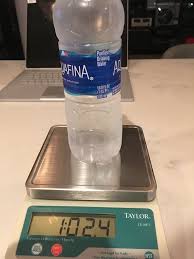Arctic Silver Thermal Adhesive Alternative

The Arctic Silver Thermal Adhesive has long been a go-to product for many tech enthusiasts and professionals seeking optimal thermal conductivity in their electronic devices. This adhesive, renowned for its effectiveness in bonding heat sinks and electronic components, has been a staple in ensuring efficient heat dissipation and overall system performance. However, with the ever-evolving landscape of technology, there is a constant quest for alternative solutions that could potentially offer similar or even improved thermal conductivity while addressing certain limitations of the Arctic Silver Thermal Adhesive.
The necessity for efficient thermal management in electronic devices cannot be overstated. As processors and graphics cards become more powerful and compact, the need to dissipate heat effectively becomes increasingly critical. The Arctic Silver Thermal Adhesive alternative has been a dominant choice due to its ability to create a strong bond while facilitating heat transfer between components. However, its application can be challenging, particularly during removal, which may result in damage to sensitive electronic parts.
In the pursuit of alternatives, several innovative solutions have emerged in the realm of thermal adhesives:
Thermal Pads:
One notable alternative gaining traction is the use of thermal pads. These pads offer a simpler application process compared to thermal adhesives. They can be easily installed and removed without the need for potentially damaging solvents or excessive force. Modern thermal pads exhibit impressive thermal conductivity, rivaling that of traditional adhesives, making them an appealing option for many users.
Liquid Metal Thermal Compounds:
Liquid metal compounds have also emerged as a noteworthy alternative. These compounds boast exceptional thermal conductivity, often surpassing that of conventional thermal adhesives. However, their application requires precision and care, as they can be electrically conductive and may pose a risk if improperly applied. Yet, their superior performance in heat dissipation makes them an intriguing choice for experienced users.
Graphene-based Thermal Adhesives:
Graphene, known for its excellent thermal conductivity, has been incorporated into some thermal adhesives. These innovative formulations aim to leverage graphene’s unique properties to enhance heat transfer efficiency. Graphene-based adhesives offer promise in delivering superiorthermal conductivity while maintaining ease of application.
Hybrid Solutions:
Some manufacturers are exploring hybrid solutions that combine different materials to achieve a balance between ease of use, high thermal conductivity, and user safety. These hybrids aim to provide an optimal blend of performance and convenience.
When considering alternatives to the Arctic Silver Thermal Adhesive, it’s crucial to assess several factors such as thermal conductivity, ease of application, electrical conductivity, and the removal process. Additionally, user expertise and the specific requirements of the application must be taken into account before opting for any alternative solution.
Conclusion
While the Arctic Silver Thermal Adhesive alternative remains a benchmark in the realm of thermal management, the technology landscape continues to evolve, offering new alternatives that aim to address its limitations and enhance performance. Whether through the use of thermal pads, liquid metal compounds, graphene-based adhesives, or hybrid solutions, the quest for optimal thermal conductivity and efficient heat dissipation remains an exciting and ongoing journey in the world of electronics cooling.





